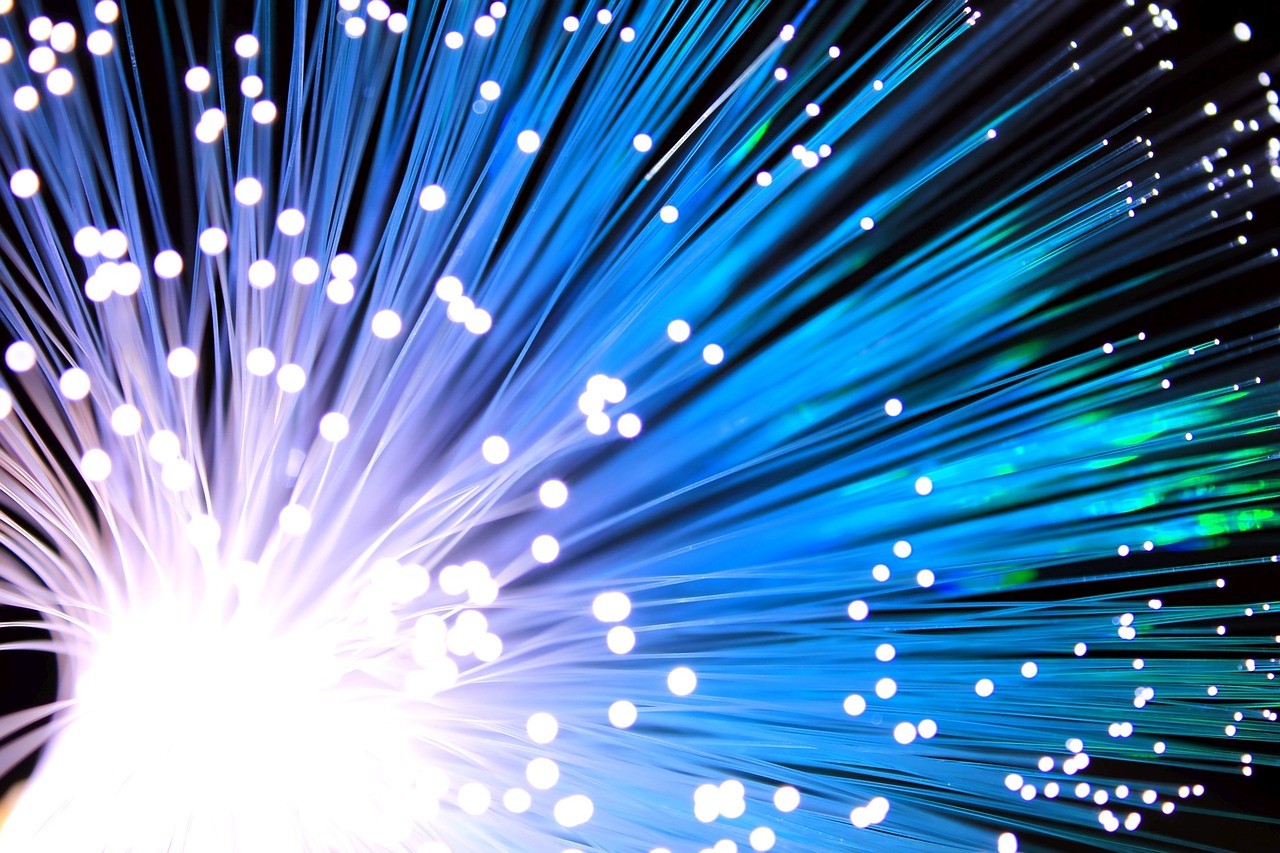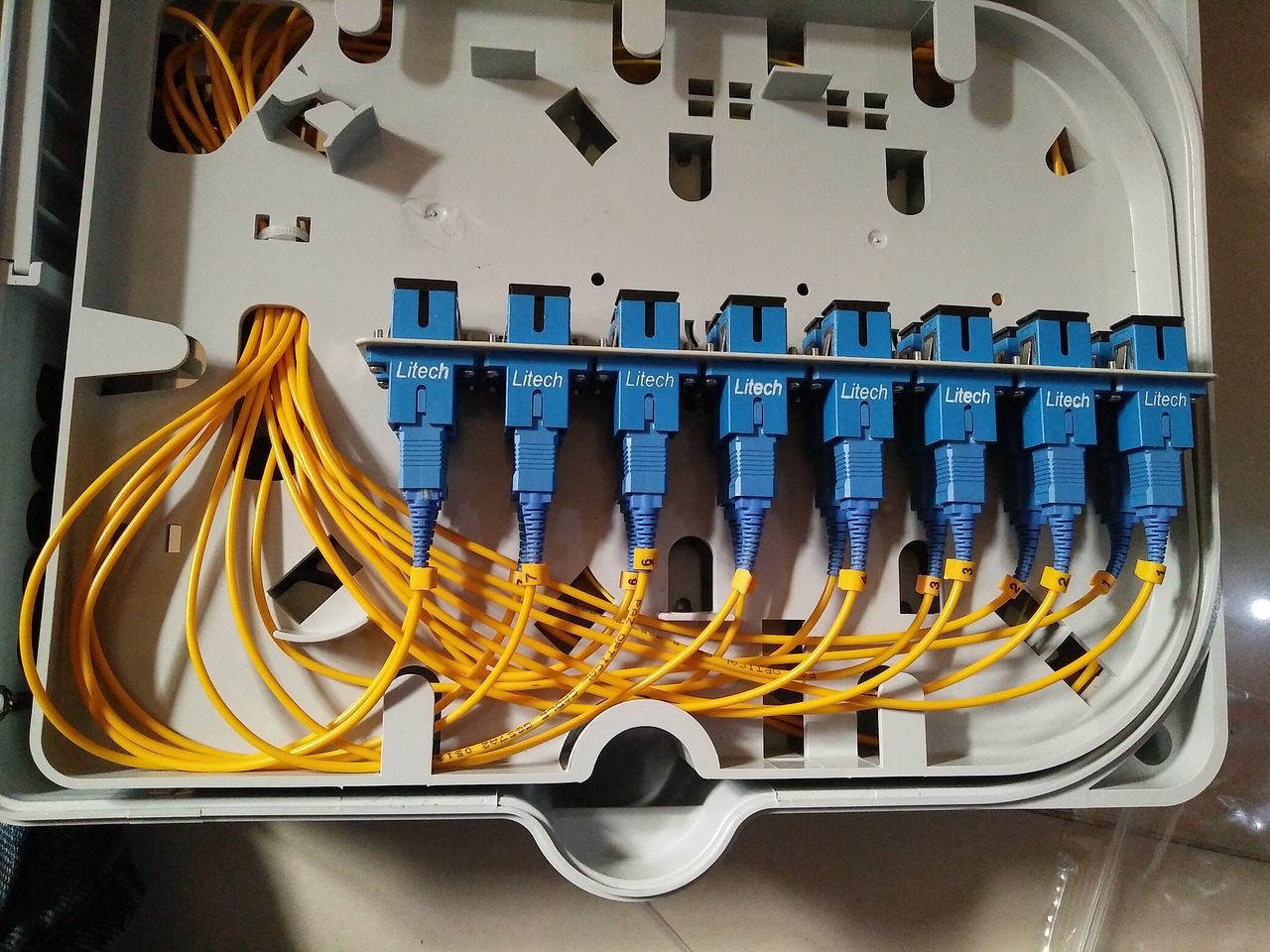Optical Fiber Cable – What They Are and Why They’re Used
An optical fiber cable, sometimes known as fiber optic cable, is a transparent, flexible fiber created with drawing glass. This type of glass is useful as a way to transmit data between the ends of the fiber over long distances. Should you use optical fiber cable in your network? What are some of the advantages of optical fiber cable? We’ll answer these questions and more.
What is Optical Fiber Cable?

When talking about optical fiber cable, conversations center on the ability of the fiber to carry signals with pulses of light. Some pulses use small lasers, while others come from “light-emitting diodes,” or LEDs. Optical fiber cable is made up of a few strands of glass, each barely the thickness of a human hair.
The core resides at the center of each optical fiber cable, which is where the pathway for the light is. A layer of glass, known as cladding, surrounds the core and reflects the light to prevent signal loss.
Optical fiber cable comes in two primary types: multi-mode and single mode. With multi-mode fiber, the strings use LEDs to generate light, while a single mode uses thin glass strands with a laser.
Advantages of Optical Fiber

Now that we’ve addressed what optical fiber cable is let’s take a look at some of the benefits of using it.
Bandwidth
Perhaps the most significant advantage optical fiber cable holds over similar technologies is its bandwidth. Currently, the limitations of optical fiber cable are unknown; however, some tests have been able to transmit data at up to an incredible 200 terabytes per second. Of course, these speeds are lab engineered and merely theoretical in a real-world capacity. In the real world, we’re not quite there, although we’re getting close.
Something worth noting with optical fiber cable is that you can transmit multiple wavelengths simultaneously. You can double or even triple the speed and bandwidth you’re getting this way. Also, bear in mind that it is easier to upgrade fiber. That means that as market needs arise, companies can come back and upgrade the fiber as needed.
Long distance transmission
Another advantage of optical fiber cable is the ability to use it over long distances. With Ethernet and Cat 5 connections, the amount of wiring available is much more limiting when it comes to bandwidth. Copper wires don’t carry the same bandwidth advantages that fiber does, and wireless doesn’t have the technology to broadcast at great distances yet.
With optical fiber cable, you can use one fiber line for a gigabit of bandwidth over distances of 100 miles or more. It’s easy to install, doesn’t experience much data loss, and is much cheaper than other, older technologies.
Lower costs
Speaking of cheaper, the cost of fiber is significantly less than other competing technologies. First, it’s not as valuable as copper, so it is less likely to be stolen. There’s no concern over frequency or channel crowding, and there’s little to no signal degradation. All of these things work together to drive down the cost of optical fiber cable.
Faster speeds
We talked previously about bandwidth, but did you know that optical fiber cable can transmit data at nearly the speed of light? It’s true. Right now it’s only 31 percent slower. When it comes to fiber versus copper cable, you’re talking about the speed of photons versus the speed of electrons. Copper cable doesn’t come close to matching the speed that fiber produces.
Immune to electromagnetic interference
Since fiber isn’t metal and has a low attenuation rate, you’ll notice that it doesn’t experience interference with other installation or wiring in a building.
When electric wires are close to each other, the electromagnetic field that each produces can lead to interference and signal degradation. That’s no longer a problem thanks to optical fiber cable.
Transmission security
Nowadays it is much easier to hack into a cable signal than it is an optical fiber one. Intercepting a modulated signal over copper wire is possible, but much more difficult using optical fiber cable. Additionally, if an attempt is made to tap into the fiber, the signal degrades almost immediately. Experts can then trace the tap to its source using a reflectometer.
Small in size
From a copper cable perspective, more channels mean a bigger size. In the old days, they could even cross one another, resulting in the ability to hear conversations that weren’t your own. No such limitations or problems exist with fiber. You just need to switch out the fiber module to gain higher speeds and higher bandwidth. With copper cable, you must dig up the old line and lay a brand new one.
Limits fraud
It’s not uncommon for thieves to dig up copper cable since they can trade or sell it as scrap metal. This means that cable companies often find themselves missing several hundred feet of cable when robberies occur. It’s not a problem with fiber, as there is no market for it.
Easy to install
Increasing the capability and bandwidth of copper cables typically makes them more rigid and unwieldy. As a result, these thick copper cables are tough to install, especially in buildings where they have to go through ducts or walls.
Optical fiber cable, on the other hand, offers less resistance which makes it easier to install. It is flexible and can run along already existing electrical lines without causing problems. Fiber is also much easier to use in portable or temporary situations due to its light weight, flexibility, and small size.
Reliability
Copper cable-based connectivity outages occur for a wide variety of reasons. An outage could be due to severe weather, temperature fluctuations, or excessive moisture. Worn or old copper cable may also present a fire hazard because of the electric current that runs through it. You also run the risk of interference from radio or electronic signals with copper-based cable wire.
Optical fiber cable, on the other hand, runs no such risks. It runs independently of the cable or telephone companies, which means it’s unlikely that someone is messing with wiring and inadvertently cuts the wrong one. Fiber is a much more reliable technology and isn’t prone to have outages and problems like copper cable.
Future proof
We’ve already discussed the high capacity and bandwidth provided by optical fiber cable. Once the fiber is installed, it is highly unlikely that you will ever need to upgrade. Using optical fiber cable removes all the guesswork with future needs.
You’ll also realize the cost advantage of future maintenance and supervision. Copper cable requires a lot of oversight and updating, whereas optical fiber cable requires little management and is much less dependent on regular maintenance.
Multiple business adoption
Throughout the world, companies are turning to optical fiber cable to keep their information and data secure and safe. It’s nearly impossible to hack a fiber line, as it requires cutting the line to do so. As a result, if someone cuts the cable, the entire system goes down.
Additionally, businesses and organizations do not share fiber connections with other companies. They have their own dedicated lines. This means that optical fiber cable provides a safer, better, and more secure option when it comes to keeping and protecting company data. With the obvious advantages of using optical fiber cable, it’s only a matter of time before more companies make the switch.
Optical Fiber Cable is the Better Option

Organizational information technologies are just one area where needs can vary dramatically. Having optical fiber cable provides plenty of benefits, and it’s common to see more and more businesses use it for their primary data transmission.
Optical fiber cable offers many advantages and benefits to society. Knowing what advantages optical fiber cable holds over other technologies gives you the information you need to make wise choices.
Optical fiber cable does have its disadvantages as well, mainly the increased expense, but future development will only serve to provide improvements to these drawbacks. The rapid deployment and development of fiber will continue to provide better communication options for years to come.
